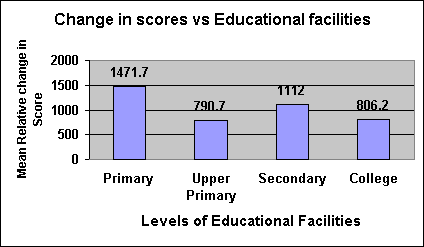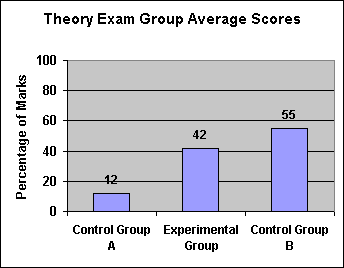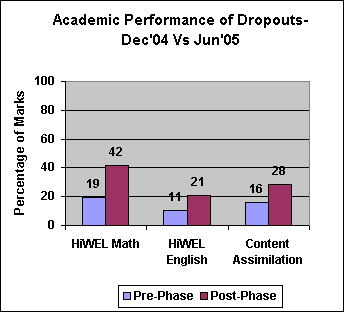
|

|
||||||||||||||||||||||||||||||
|
|||||||||||||||||||||||||||||||
|
Research Findings
Over the 4 year research phase (2000-2004), HiWEL has extensively studied the impact of Learning Stations on children. Hole-in-the-Wall Learning Stations were installed in diverse settings, the impact of interventions was monitored and data was continually gathered, analyzed and interpreted. Rigorous assessments were conducted to measure academic achievement, behaviour, personality profile, computer literacy and correlations with socio-economic indicators.
The community believes that Learning Stations are beneficial for children · The Learning Station was set up in November 2000 and the evaluation done in July 2004. · The study was done on 248 respondents from the members of local community.
Academic Performance Dhapewada, Maharashtra Academic performance of the children improves · Class 9 children were assessed on CBSE Class 10th sample exam paper. · The test was administered in Marathi. · Children were assessed on four subjects at two time points- pre test [Jan 2004] and post test [Aug 2004]. · Internal evaluation was done by the local School Teachers at Dhapewada which was then independently verified by a research body. Madangir, New Delhi Children access content, learn from it and retain this learning · Content Assimilation test was based on the content provided in the Learning Stations. · This Learning Stations at this site had no Internet connectivity. · The Graph compares the performance of Test Group over a period of time (July 2004 vs. October 2004). Overall - National Summary Across the nation, children with access to Learning Station show improved academic scores · The study was conducted at a national level across 17 locations in 8 states. · The duration of the study was 9 months. · Control Group comprised of children who did not have access to the Learning Station. · While the performance of experimental group improved, that of control group actually declined over the period.
Correlation with Educational Facilities Communities with lower levels of educational facilities gain as much, and often more, as communities with higher levels of educational facilities
· The duration of the study was 9 months. · Change in Mean relative score refers to the change in Computer Literacy scores for a community over a 9 month duration of study.
Comparison with Formal Computer Education MIE children’s performance in common science test comparable with children attending formal computer classes · The graphs compare scores of the three groups on overall averages, practical examination averages and theory examination averages. · Control Group A was drawn randomly from a village that has no computers in school or Hole-in-the-Wall Learning Station. · Control Group B comprised of students who had received formal computer education in Shirgaon High School. · The study was conducted in Sindhudurg, Maharashtra in two phases from February to March 2003. · All students were tested on 8th Grade examination of the Computer Science syllabus in two phases. · All the examinations were conducted in Marathi, the language of instruction.
Performance of Dropouts Out-of-school children benefit from MIE · The graph compares the performance of Dropouts over a 6-month period (Dec 2004 vs. June 2005). · Content Assimilation test was based on the content provided in the Learning Station.
Peer-to-Peer Learning Patterns Sociometric survey was implemented on children to determine composition of users and identify the leaders (Madangir, July 2004). The focus was on social networking, self-regulation and collaboration, patterns of knowledge flow from key leaders (who were identified and provided with targeted input) to other children at the Learning Station. The sociometric survey found: • Self-organizing groups of children who organize themselves into Leaders (experts), Connectors and Novice groups. • Leaders and Connectors identified seem to display an ability to connect with and teach other users. • Key leaders on receiving targeted intervention, play a key role in bringing about a “multiplier effect in learning” within the community. • Often girls are seen to take on the role of Connector, who initiates younger children and siblings (usually novices with little or no exposure to computers) and connects them to the leaders in the group. 
|
|
||||||||||||||||||||||||||||||
|
© Hole-in-the-Wall Education Ltd. 2015 | Privacy Policy | Terms of Use |
|||||||||||||||||||||||||||||||











